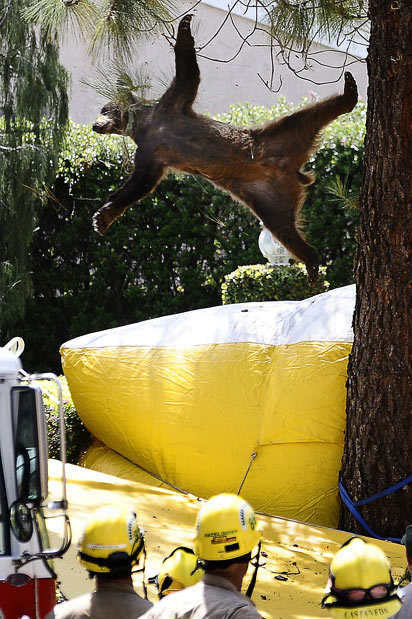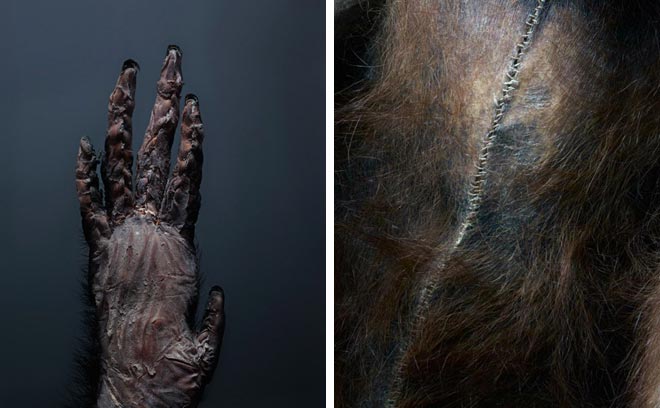animals

Most people think that even though it is possible that they are dreaming right now, the probability of this is very small, perhaps as small as winning the lottery or being struck by lightning. In fact the probability is quite high. Let’s do the maths.
{ OUP | Continue reading }
image { Dr. Julius Neubronner’s Miniature Pigeon Camera }
birds, flashback, psychology, technology | July 21st, 2012 4:47 am

Nearly 500 species of animals (ranging from mammals through to insects) have been observed performing homosexual behaviour, according to Aldo Poiani, a biologist at the University of Melbourne.
In addition to penguins, he says, koalas, flamingos, giraffes, monkeys, killer whales and dolphins are on list. In some cases, the animals commit themselves to a same-sex partner for life (like penguins), although in other species it appears that they have no preference, but rather act ‘bisexually’. […]
“Homosexual behaviour occurs in over 130 species of birds, yet explaining its maintenance in evolutionary terms appears problematic at face value, as such sexual behaviours do not seem in immediate pursuit of reproductive goals,” McFarlane and colleagues wrote in the journal Animal Behaviour in late 2010. […]
Darwin’s theory of evolution by natural selection suggests that animals, including humans, exist in order to continue their species, or rather, reproduce. It is an evolutionary paradox, says McFarlane, that animals engage in homosexual behaviour when “the prevailing view (is) that sex is for reproduction only”, which makes it scientifically significant to explain. According to Darwin’s theory, it’s a scientific conundrum that evolution hasn’t eliminated individuals that are not going to actively reproduce.
According to RV Kirkpatrick, an anthropologist from the University of California, Davis, in the Darwinian view, individuals should seek to maximise reproductive success. “Homosexual behaviour is too widespread to be a fluke or an aberration, but evolutionists in particular should be puzzled by its ubiquity,” he wrote in the journal Current Anthropology in 2000. […]
One theory is that because the percentage of exclusive homosexuality in both the animal and human world is so small, it poses no threat to the continuation of a species.
{ Cosmos | Continue reading }
photo { Cécile Menendez }
animals, photogs, relationships, science | July 10th, 2012 11:12 am
horse | July 5th, 2012 6:23 pm

According to the evolutionary physiologist and geographer Jared Diamond, in his acclaimed book “Guns, Germs and Steel” (1997), there are six criteria that animals must meet for domestication. […]
First, domestic animals cannot be picky eaters; they must be able to find enough food in and around human settlements to survive. […]
Second, only animals that reach maturity quickly relative to the human life span are worth considering. We can’t afford to waste too much time feeding and caring for an animal before it grows large enough to be put to work or slaughtered. Failure to meet this requirement prevented elephants from achieving widespread domestication; they can be tamed and are good laborers, but take 15 years to reach adult size. […]
Third, domesticated species must be willing to breed in captivity. […]
Fourth, domesticated animals must be docile by nature. […]
Fifth, domestic animals cannot have a strong tendency to panic and flee when startled. This rules out most species of deer and gazelles, which have flighty temperaments and a powerful leap that enables them to escape over high fences. […]
Lastly, with the exception of the cat, all the major domesticated animals conform to a social hierarchy dominated by strong leadership.
{ Life’s Little Mysteries | Continue reading }
photo { Anri Sala, No Barragán, No Cry, 2002 }
animals | July 5th, 2012 4:15 pm

Seventy-four percent of dog owners believe that their dogs experience guilt. […]
There is plenty of evidence for what scientists refer to as primary emotions – happiness and fear, for example – in animals. But empirical evidence for secondary emotions like jealousy, pride, and guilt, is extremely rare in the animal cognition literature. The argument usually given for this lack of evidence is that such secondary emotions seem to require a level of cognitive sophistication, particularly when it comes to self-awareness or self-consciousness, that may not exist in non-human animals.
{ Scientific American | Continue reading }
painting { Pan Deng }
dogs, psychology | June 2nd, 2012 9:00 am

The parent-offspring conflict theory delineates a zone of conflict between the mother and her offspring over weaning. We expect that the mother would try to wean her offspring off a little earlier than the offspring would be ready to wean themselves, thereby entering the zone of conflict for a short span of time. Though the theory was originally formulated in the context of weaning, it is also relevant in other contexts where a parent and his/her offspring have conflicting interests. Conflict has been reported over feeding, grooming, traveling, evening nesting, and mating in various species.
There are several theoretical models that address parent-offspring conflict in different contexts like reproduction, intra-brood competition, sexual conflict, and parental favoritism toward particular offspring. Though relatedness between parents, offspring and siblings can be measured easily, it is not easy to measure precisely parental investment and the costs and benefits to the concerned parties in nature. In some studies attempts have been made to quantify parental care in terms of milk ingested by offspring, sometimes as a correlate of weight gain by the individual pups, and sometimes by the duration of suckling. However, we have to accept that there is considerable variation in the suckling rates of individual pups, and in hunger levels of individuals, and hence such measures can only provide a rough estimate of parental investment. It is therefore not surprising that empirical tests of the theory in a field set up are sparse, especially in the original context of weaning. The parent-offspring conflict theory has in fact been claimed to be one of the most contentious subjects in behavioral and evolutionary ecology and also one of the most recalcitrant to experimental investigation.
{ arXiv | PDF }
animals, science, theory | May 13th, 2012 3:55 pm
The bear famously tranquilized on the University of Colorado campus last week, and immortalized in a viral photo by CU student Andy Duann, met a tragic death early Thursday morning in the southbound lanes of U.S. 36.
{ DailyCamera | Continue reading }
animals, incidents | May 4th, 2012 6:10 am
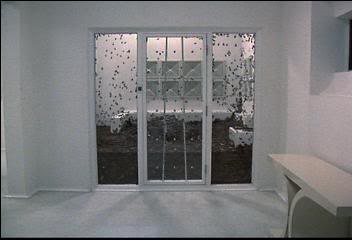
Cockroaches are actually highly social creatures; they recognize members of their own families, with different generations of the same families living together.
Cockroaches do not like to be left alone, and suffer ill health when they are.
And they form closely bonded, egalitarian societies, based on social structures and rules. Communities of cockroaches are even capable of making collective decisions for the greater good.
By studying certain species of cockroach, we may even be able to learn some insights into how more advanced animal societies evolved, including our own.
{ BBC | Continue reading }
insects, science | May 3rd, 2012 12:37 pm
animals, photogs | April 28th, 2012 3:28 pm
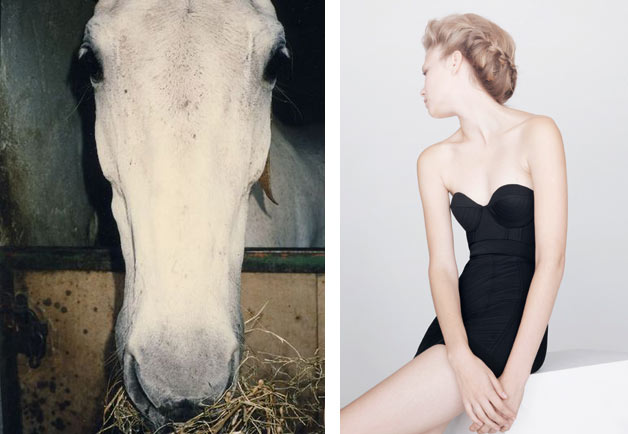
{ 1.Francesco Ercolini | 2. Calla }
quote { Pierre Louÿs, Manuel de civilité pour les petites filles à l’usage des maisons d’éducation, 1926-1927 | full text | Wikipedia }
books, horse, sex-oriented | April 20th, 2012 11:42 am

Large eggs must have thick shells, which make it difficult for the developing embryo to ‘breathe’ by exchanging gases with the outside world. This places an upper limit on egg size.
So, even though they grew into giants as adults, dinosaurs were forced to produce relatively tiny young. Titanosaur hatchlings, for example, were nearly 2,500 times smaller than the 4-tonne adults. By contrast, the live-born calf of an Asian elephant (Elephas maximus) is about 25 times smaller than its mother.
When the young of large animals start out small, they must grow through a large size range before reaching adulthood, and compete with species of many different sizes as they do so.
Codron and his colleagues developed a model that suggests that there was intense competition among small and medium-sized dinosaurs, so that it was difficult for medium-sized adults to make a living, and adults had to keep growing until they reached very large sizes to gain a competitive edge.
But being big also has drawbacks. When an asteroid impact at the end of the Cretaceous period (65 million years ago) wiped out most large-bodied animals, there were so few small dinosaur species that the group was almost obliterated, with only the birds surviving. However, the many small mammals alive at the time were well suited to a world that favored diminutive species.
{ Nature | Continue reading }
animals, flashback, science | April 19th, 2012 10:27 am

Vets have been trying to explain strange symptoms in 21 cats that arrived in North-East Scotland, between 2001 and 2010. The animals appeared to have a slowly-progressing neurological disease. This paper observes how the cats walk with an odd gait with stiff, extended tails. Dubbed “robotic cats” due to their movements, they presented a veterinary oddity not seen before.
Cats with a slightly different but possibly related condition have been spotted in Sweden and Austria, where it was referred to as “staggering disease.” One of authors suggests “All the cats included in our study, and most of the cats reported with ‘staggering disease’, belong to the rural population accustomed to hunting birds and rodents”. It can be speculated that the agent may be transmitted from these animals to cats. The authors conclude that the late onset age of this disease, its slow progression, peculiar clinical signs and the data from the tests suggest these cats were affected by the same unique, previously unreported condition.
{ Journal of Feline Medicine and Surgery/SAGE | Continue reading }
cats, science | April 18th, 2012 8:26 am

The outbreak of a new livestock disease in western Europe last year, particularly harmful to offspring, could move further into areas surrounding the worst affected countries in the next cycle of new births, scientists say.
Schmallenberg virus - named after the German town where it was first detected in November - infected sheep and cows on at least 2,600 farms in eight EU countries last year, most likely between August and October.
Thought to have been spread for hundreds of miles across Europe by biting midges and warm late summer winds, the virus has since been confirmed in Belgium, the Netherlands, Luxembourg, France, Italy, Spain and Britain.
{ Reuters | Continue reading }
animals, health, uh oh | April 18th, 2012 6:00 am
cats, photogs | April 17th, 2012 10:15 am

When the sun goes down in the subtropical forests of Puerto Rico, hundreds of thousands of bats emerge from the caves that stud the island’s northern end. After a day of sleeping, the animals are ready for a hard day’s night of hunting insects. For some of them, though, there will be no feast of beetles and mosquitos, and they’ll instead wind up a meal themselves for the snakes that have set up an ambush at the cave’s entrance. (…)
The nightly ritual is played out on its largest scale at La Cueva de Los Culebrones, or the Cave of the Long Snakes. The cave’s estimated 300,000 bats can empty out in as little as three hours, providing the boas with an all-you-can-eat bat buffet. Biologists observers have seen as many as 20 boas hanging around the cave entrance. (…)
Sometimes, a snake that’s not having any luck with its own hunting will attempt to steal a bat from another snake. On one occasion, a biologist watched three snakes fight over a large bat carcass for over an hour and a half.
{ Matt Soniak | Continue reading | video }
animals, science | April 16th, 2012 5:51 am

Baboons have mastered one of the basic elements of reading - identifying the difference between sequences of letters that make up actual words from nonsense sequences.
Although the animals have no linguistic skills, they were able to classify a four-letter sequence as either a real word or a random sequence. These findings challenge the long-held notion that the ability to recognise words in this way - as combinations of objects that appear visually in certain sequences - is fundamentally related to language.
It now appears that when humans read, we are partly drawing on an ancient ability, predating the evolution of our own species.
Linguists agree that language is needed during reading, but at which stage language becomes a necessity has come under debate. Past research has shown that animals have the ability to discriminate letters from one another, but previously experts thought the ability to recognise words was dependent on an ability to understand language.
{ Cosmos | Continue reading }
photo { Robin Schwartz }
Linguistics, animals, science | April 13th, 2012 8:08 am
photogs, taxidermy | April 13th, 2012 5:26 am

Thriving colonies disappear overnight without leaving a trace, the bodies of the victims are never found. It’s what’s happening to fully a third of commercial beehives, over a million colonies every year. Seemingly healthy communities fly off never to return. The queen bee and mother of the hive is abandoned to starve and die.
Thousands of scientific sleuths have been on this case for the last 15 years trying to determine why our honey bees are disappearing in such alarming numbers. “This is the biggest general threat to our food supply,” according to Kevin Hackett, the national program leader for the U.S. Department of Agriculture’s bee and pollination program.
Until recently, the evidence was inconclusive on the cause of the mysterious “colony collapse disorder” (CCD) that threatens the future of beekeeping worldwide. But three new studies point an accusing finger at a culprit that many have suspected all along, a class of pesticides known as neonicotinoids. (…)
Their vanishing is nature’s way of telling us that conditions have deteriorated in the world around us. Bees won’t survive for long if we don’t change our commercial breeding practices and remove deadly toxins from their environment. (…)
Germany and France have already banned pesticides that have been implicated in the deaths of bees.
{ Reuters | Continue reading }
collage { Matthew Cusick }
bees, horror | April 11th, 2012 1:02 pm
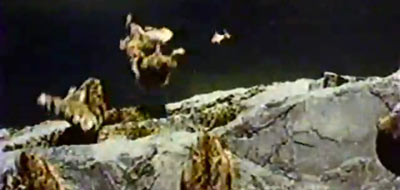
We all know the story: Every few years, millions of lemmings, driven by a deep-seated urge, run and leap off a cliff only to be dashed on the rocks below and eventually drowned in the raging sea. Stupid lemmings. It’s a story with staying power: short, not-so-sweet, and to the rocky point.
But it is a lie.
{ The Scorpion and the frog | Continue reading }
animals, science | April 6th, 2012 10:26 am
cuties, elephants | April 5th, 2012 2:16 pm








